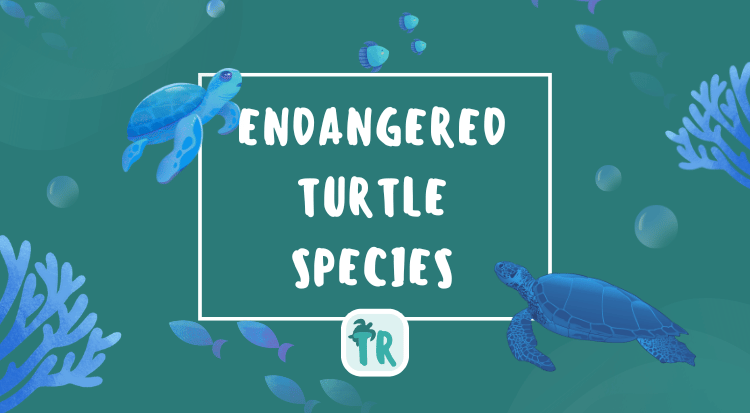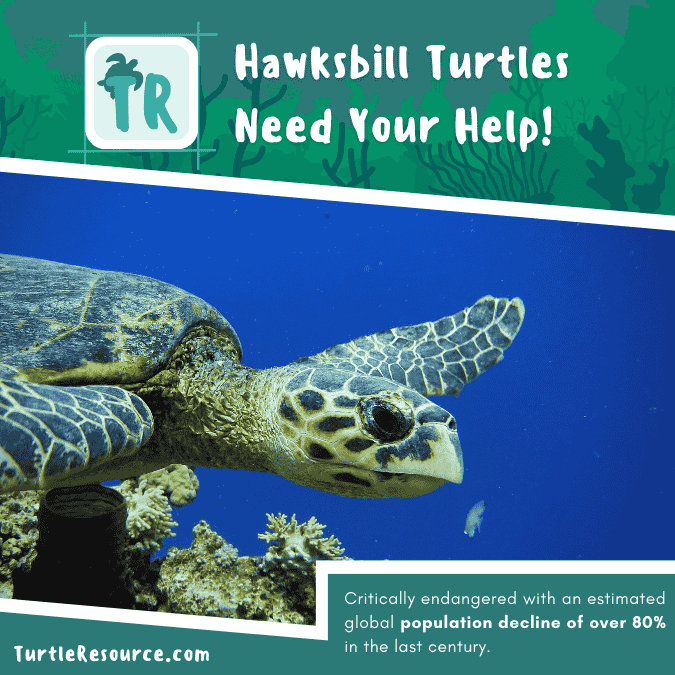Endangered Turtle Species – Threats and Conservation
Learn about endangered turtle species—their threats, notable species at risk, and global conservation efforts.

Turtles have been around for an incredibly long time – over 200 million years! They've witnessed incredible events like the extinction of the dinosaurs and considerable shifts in the Earth's climate. But now, many turtles are facing a severe threat: extinction. This means they could disappear from our planet forever.
Just How Endangered Are Turtles?
The situation is alarming. More than half of the world's 356 turtle species are considered threatened. That's a huge number! This includes:
- Sea Turtles: All seven species of sea turtles are at risk.
- Freshwater Turtles: Many turtles living in rivers, lakes, and wetlands are also in danger.
- Tortoises: Even turtles living on land, called tortoises, face serious challenges.
Turtles face a pressing conservation crisis. More than half of all turtle and tortoise species are threatened with extinction. Habitat destruction, pollution, climate change, illegal trade, and overharvesting have dramatically reduced their populations.
Turtles that once thrived in abundant wetlands, grasslands, forests, and coral reefs now struggle to survive. Without urgent protection and restoration efforts, many species could be lost within our lifetimes.
This loss would not only silence their gentle presence but also destabilize ecosystems where they’re essential players, illustrating the importance of halting their decline and ensuring their survival for future generations.

What's Causing This Crisis?
Several factors are contributing to the decline of turtles:
- Habitat Destruction: As humans build cities, cut down forests, and drain wetlands, turtles lose their homes and places to find food.
- Hunting and Illegal Trade: Turtles are hunted for their meat, eggs, and shells. These are sometimes eaten as delicacies, used in traditional medicine, or sold as souvenirs.
- Pollution: Plastic pollution is a significant threat to turtles, especially those living in the ocean. They can mistake plastic for food, which can injure or kill them. Chemicals and oil spills also pollute their environments.
- Fishing Accidents: Turtles can get accidentally caught in fishing gear and drown.
- Invasive Species: These are animals that don't belong in a certain area. They can harm turtles by eating them and their eggs or competing with them for resources.
- Diseases: Turtles can get sick from various diseases, just like people.
To learn more about this topic, please read our Threats to Turtle Populations.
Turtles in Serious Trouble
Some turtle species are facing an exceptionally high risk of extinction:
- Yangtze Giant Softshell Turtle: This turtle is critically endangered, with only a few individuals left in the world.
- Kemp's Ridley Sea Turtle: This sea turtle is also critically endangered and faces threats like getting caught in fishing gear and oil spills.
- Ploughshare Tortoise: This species is highly sought after for its beautiful shell, making it a poacher's target.
- Hawksbill Sea Turtle: This sea turtle is also hunted for its shell. It's used to make jewelry and other items.
- Madagascar Big-Headed Turtle: This turtle is threatened by habitat loss and hunting.
Plastic pollution poses serious threats to turtles, primarily because they often mistake floating plastic for prey like jellyfish. Ingested plastic can block their digestive systems, leading to internal injuries, malnutrition, or death. Discarded nets and lines easily entangle them, making it harder to swim, feed, or reach nesting beaches.
Over time, the chemicals released by degrading plastic may also harm their reproductive health, compounding the long-term impact on vulnerable turtle populations.

Global Efforts to Save Turtles
The good news is that people around the world are working to protect turtles! Here are some of the actions being taken:
- International Agreements: There are rules to prevent the trade of endangered turtles and their parts.
- Protected Areas: Creating safe havens like parks and reserves helps protect turtle habitats.
- Sustainable Fishing: Fishermen use special devices and techniques to avoid catching turtles.
- Captive Breeding: Zoos and other organizations are breeding turtles to help increase their numbers.
- Community Involvement: People are working with local communities to protect turtles and find alternative ways to make a living.
- Education: Raising awareness about the importance of turtles and the threats they face is crucial.
International Conservation Initiatives and Multilateral Strategies for Turtle Preservation
Efforts to protect turtles have expanded considerably over recent decades, engaging a broad network of international organizations, non-governmental entities, government agencies, and local communities. These global conservation initiatives focus on preventing habitat loss, curbing illegal trade, and mitigating climate change impacts.
Collaborative agreements such as the Convention on International Trade in Endangered Species (CITES) regulate the global trade of turtles and turtle products, helping to reduce exploitation and ensure sustainable use. Likewise, the International Union for Conservation of Nature (IUCN) and its specialist groups provide data-driven assessments and policy recommendations to guide conservation priorities.
In addition, targeted habitat restoration projects, marine protected areas, and the enforcement of nesting beach regulations have shown positive outcomes. Many programs incorporate community-based conservation, ensuring that local stakeholders—whose livelihoods may depend on coastal or wetland resources—gain economic incentives and training. Complementary measures include environmental education campaigns designed to increase public awareness, reduce plastic pollution, and promote responsible tourism. Advances in genetic and ecological research further inform captive breeding efforts, reintroduction protocols, and the creation of “head-starting” programs for hatchlings.
Through a combination of scientific research, policy frameworks, and grassroots involvement, these global endeavors seek to secure the long-term persistence of turtle populations and maintain their essential ecological roles.
Sources
– Gibbons, J.W. Turtles of the Southeast.
– Mittermeier, R.A. & Vetter, H. Turtles of the World.
– Rhodin, A.G.J., et al., eds. Conservation Biology of Freshwater Turtles and Tortoises.
Success Stories in Turtle Conservation
Recovery of the Green Sea Turtle in Florida
Read the news here.
- Nesting Increase: Significant growth in nesting numbers due to long-term protection.
- Conservation Measures: Beach protection, reduction of bycatch, and public education.
Community Conservation in Nepal
- Protection of the Red-Crowned Roofed Turtle: Involving local communities in conservation led to population stabilization.
- Alternative Livelihoods: Ecotourism and sustainable agriculture reduced pressure on turtle populations.
Legal Protection of the Gopher Tortoise
- Habitat Conservation: Designation of protected lands in the southeastern United States.
- Public Awareness Campaigns: Increased support for conservation efforts.
How You Can Help
Everyone can play a role in turtle conservation! Here are some ways to help:
- Reduce Plastic Use: Say no to single-use plastics like bags, bottles, and straws.
- Support Sustainable Practices: Choose seafood that is caught in a way that doesn't harm turtles. Avoid buying products made from turtle shells.
- Get Involved: Volunteer with a turtle conservation organization or participate in beach clean-ups.
- Spread the Word: Tell your friends and family about endangered turtles and how they can help.
- Be a Responsible Pet Owner: If you have a pet turtle, make sure you bought it legally and never release it into the wild.
Protecting Turtles, Protecting Our Planet
Turtles are a vital part of the natural world. By understanding the threats they face and taking action to protect them, we're helping turtles and ensuring a healthier planet for everyone.
